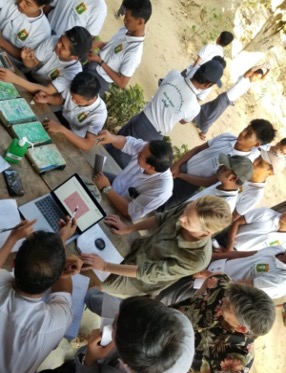
Asia and the Pacific are home to nearly half of the world’s biodiversity hotspots. Continued rapid economic development, agricultural expansion, mining, deforestation, urbanization, and illegal wildlife trade are only a few of the factors degrading this rich biological landscape. Another less-understood threat to local wildlife is disease. Due to increased human and domestic animal population pressures, like cattle and dogs, critically endangered species including tigers, Asian one-horned rhinos, snow leopards, Asian elephants, and giant pandas are at risk of contracting diseases that can threaten the survival of their species.
Young elephants throughout the world are at risk of developing elephant endotheliotropic herpesvirus hemorrhagic disease (EEHV-HD), caused by the EEHV virus, which is attributed to half the deaths of young captive Asian elephants in captive western settings. Little is known about the impact of this devastating disease on the 15,000 captive elephants and 40,000 wild elephants in Asia where young calves are acutely at risk of sudden death. One of the major challenges to understanding EEHV in Asian elephants is the lack of systematic data collection across a large enough population size to understand and manage the impacts of this devastating disease.
VIEW is working with the UC-Davis School of Veterinary Medicine and other local NGO conservation partners to develop better tools to monitor and prevent EEHV. In this project, VIEW is implementing WHIS as the first digital disease surveillance system to systematically advance the health of Asian elephants and enable the people that care for elephants to easily assess health trends in their elephant populations and collect vital data specific to EEHV.
Our goals, completed in 2022, have been to customize a WHIS site specific to this large elephant health study, provide access to the program in local languages, and begin entering information into the WHIS database. We have also begun to develop a companion smartphone app for elephant caretakers to enter information into WHIS in the field where connectivity is limited. The app will be completed in 2023. With the implementation of the WHIS program, local project partners will reap valuable benefits beyond investigating EEHV. The continued use of the WHIS program will facilitate general health surveillance and tracking of all elephants involved for years to come.










Comments